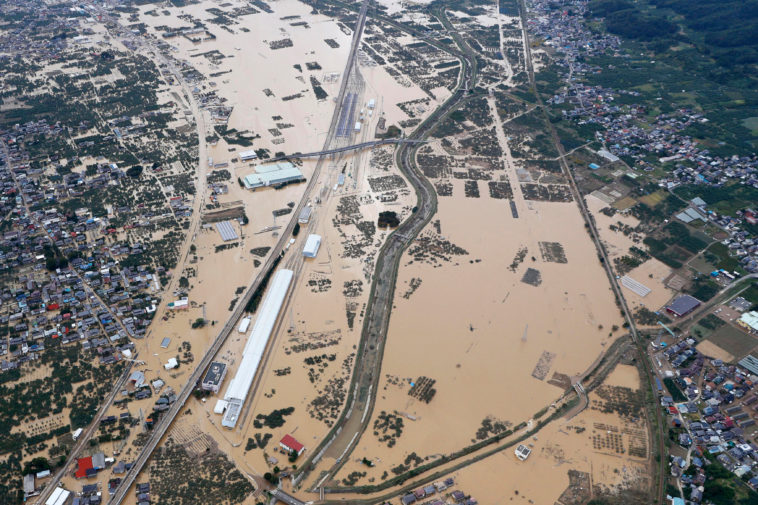A few days ago, Japan was hit with the full might of the devastating cyclone named Typhoon Hagibis and the one that felt the full brunt of this cyclone was the nationwide train system of Japan known by the name Shinkansen as it was flooded with nonstop rains and heavy mudslides.

The high-speed railway system is run by Japan’s Railway Company and they were left dead in their tracks in the face of the torrential downpours. Over the past few days of the cyclone incident, it led to death for 50 people and also knocked out power to countless in the country. The news outlet service of Japan; NHK reported that in the wake of recent events, the train service has been shut down by the government for the entire weekend. Japan Rail Pass, a travel blog posted on its blog about the warnings of the storm for the coming days. The warning reads, “Super Typhoon Hagibis forces the country to cancel hundreds of its flights and train services.”

Still, as a testament of great restoration work, most of the bullet trains have been restored back into their running conditions in some capacity. But still, many train stations and trains have been badly damaged by the storm. On Monday morning the route of Nagano station to Jōetsumyōkō station located on the coast is still closed.
The website for East Japan Railways also listed the news of suspended operations as a result of this typhoon. Most of these trains were running without reserved seats.

These high-speed bullet trains in Japan are renowned for their efficiency of transporting passengers within the country at rapid speeds I less time. Some for these trains can even travel at a speed of 200 mph. flooding for the train stations has led to most of these trains to not move at all as their depots have been filled with the muddy water.
East Japan Railway Company says one-third of its bullet trains used for the Hokuriku Shinkansen line have been damaged by flooding.#Hagibis #Typhoon #Shinkansen pic.twitter.com/0HVY4oaWFL
— NHK WORLD News (@NHKWORLD_News) October 13, 2019
Even before the 150 mph speed winds and the 3 feet worth of rain started pouring down in the country, the majority for the train stations were shut down and then cleared out completely. This led to the travel options for the Typhoon Hagibis struck regions to be completely eliminated.

Before the Typhoon Hagibis struck nearly 23000 people were evacuated from the most affected regions whereas millions were notified by the authorities about the evacuation procedure before the Typhoon Hagibis rained down watery hell with all its might.
This road was washed out to get to the flooded Shinkansen rail yard in Akanuma so we had to walk it. We’re in Nagano to assess the damage from #TyphoonHagibis. @CBSNews is here. #typhoon #台風19 Coming up on @CBSThisMorning. pic.twitter.com/QqXaz9NMZA
— Ramy Inocencio 英若明 (@RamyInocencio) October 14, 2019
Extreme weather conditions have become a major issue for the transit systems such as the national railway system in countries especially like Japan which are prone to earthquakes and storms. In addition to this, after the disaster passes, it is really an expensive task for rebuilding the entire infrastructure after that.
Related Content
How to switch the iPhone automatically from light to dark theme






Comments
Loading…